Is a photovoltaic cell enough to power your IoT solar device?
Is a photovoltaic cell enough to power your IoT solar device?
Understanding the flow of energy in an energy harvesting system is essential for designing efficient, sustainable IoT and embedded applications. Measuring PV cell output under specific lighting and evaluating storage efficiency are crucial to your IoT solar device’s performance. This article series breaks down the steps required to determine whether your system remains energy net-positive under varying conditions. In this first part, we focus on evaluating the photovoltaic (PV) cell: how to measure the energy it generates under illumination, and how to assess the efficiency of energy transfer from the PV cell to the storage system.
Evaluation with energy harvesting kit xG22-EK8200A
In this study, we explored the topic using the xG22-EK8200A Energy Harvesting Kit from Silicon Labs. While the kit provides many essentials, this study focused on the following components:
- Silicon Labs BRD8201A Dual Harvester Shield (based on e-peas AEM13920 PMIC)
- TPLC-3R8/10MR8X14 lithium capacitor (Tecate 10F 3.8V)
- Voltaic Systems photovoltaic cell P121 R1H for outdoor use
PV was chosen for its accessibility, but the evaluation method is equally valid for low-light PV cells, such as those offered by Voltaic and comparable brands.

How to accurately measure photovoltaic cell performance
The setup for the performance evaluation consisted of two Otii Ace Pro devices: one for measuring the PV cell and another for evaluating the energy storage, as shown in Figure 2. Because we focus solely on the PV cell here, a single Otii Ace Pro is sufficient for the main measurements.
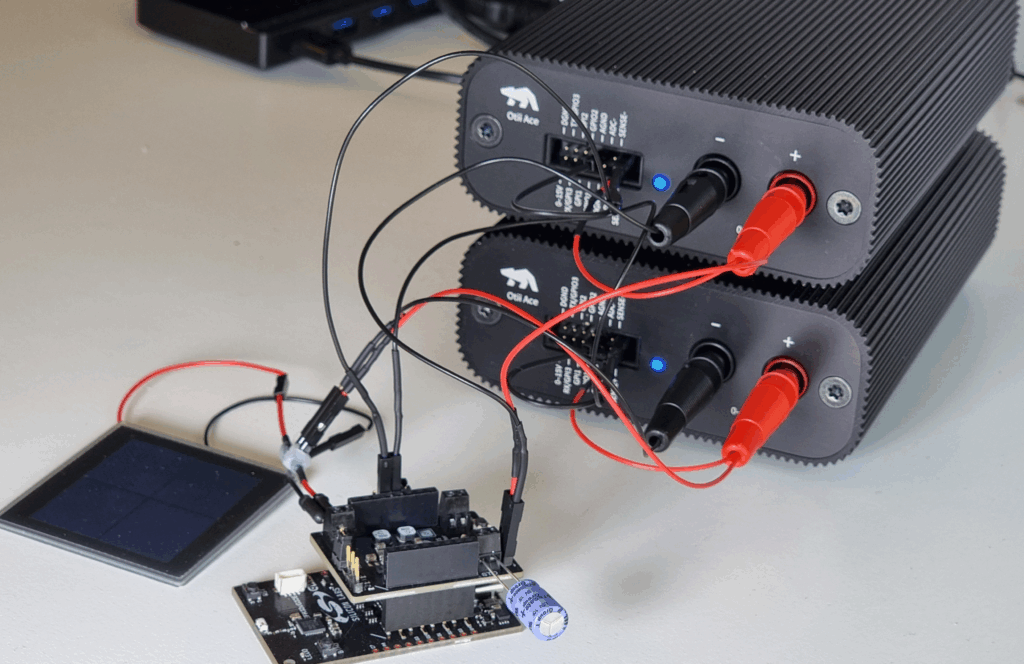
Here is the schematic of the measurement setup:

The PV cell is connected to SRC2 (source 2, DC energy source), as this is the PV cell input on the BRD8201A Dual Harvester Shield. SRC1 is for vibration sensors (source 1, AC energy source). For details, go to BRD8201A Dual Harvester Shield User Guide.
We connected the Otii Ace Pros in-line (Ampere Mode), placing the measurement device in series with the device under test to measure the current flow through the system. We also used the 4-wire connection to measure the voltage via SENSE+ and SENSE-. Without the 4-wire connection, the Ace only measures the internal voltage drop.
In the Otii project and schematics, we labeled the Otii Ace Pro measuring the PV performance as Ace_EnergyHarvesting, and the one monitoring the energy storage as Ace_Storage.
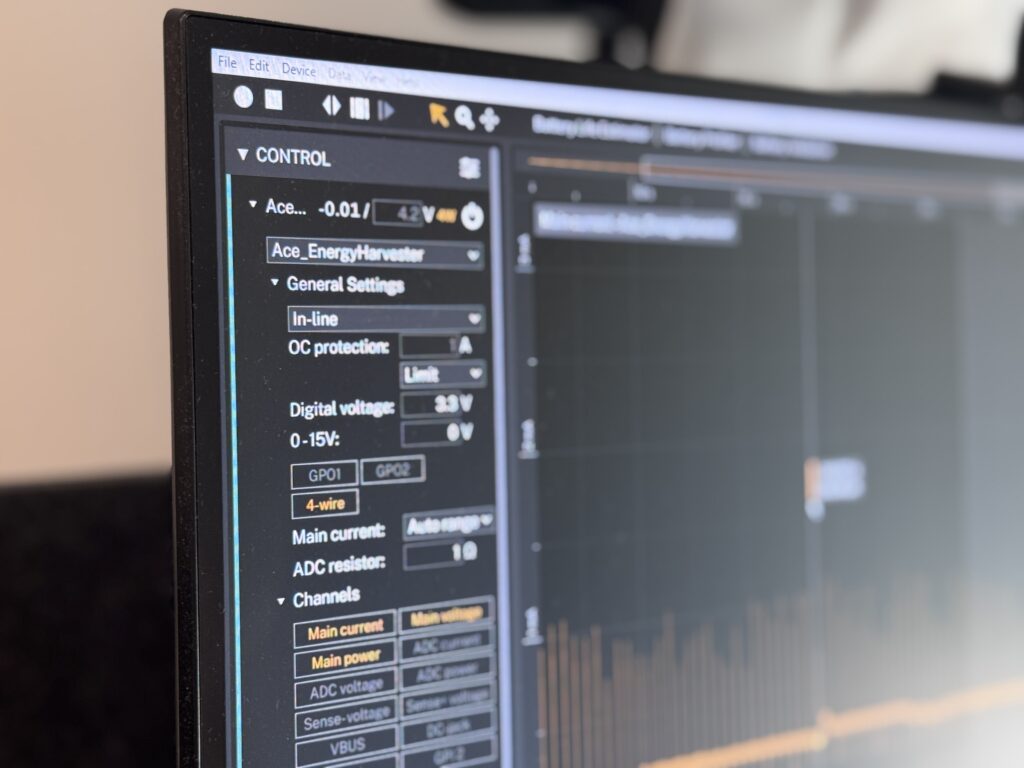
In this study, we conducted the evaluation under indoor office conditions, taking the default measurements at a standard desk. We then tested with increased illumination by adjusting the light level of a controllable lamp.
Energy harvesting performance
This evaluation setup provides valuable insights not only into the performance of the PV cell but also into the behavior of the energy harvesting PMIC.
e-peas PMIC behavior managing PV cell energy flow
In this example, we examine the energy output from a PV cell harvested by the e-peas AEM13920 PMIC under the default office lighting conditions. By monitoring the current and voltage data from the Otii Ace Pro – labeled Ace_EnergyHarvester in the project – the system shows frequent spikes in the measurement data (see Figure 5).
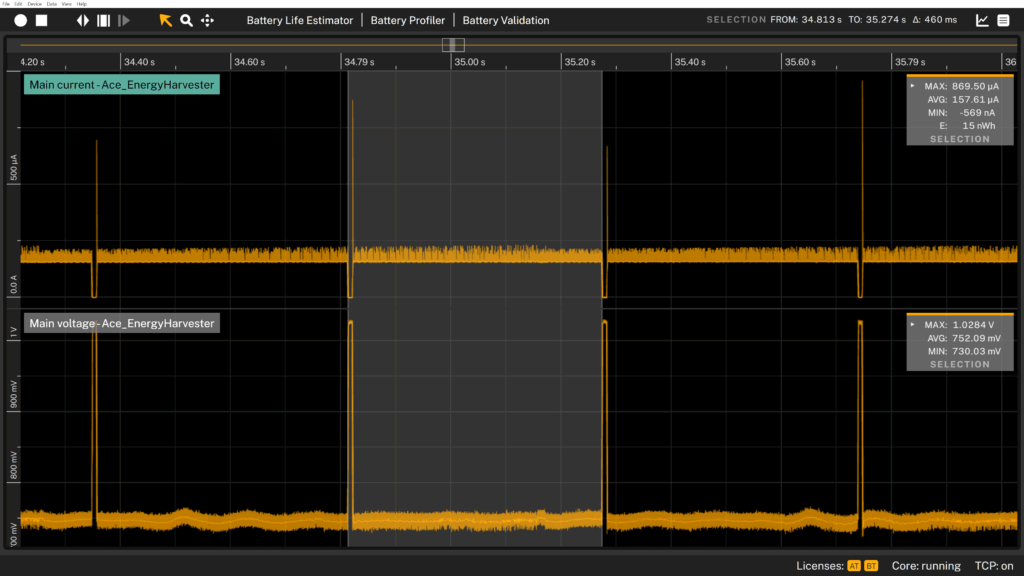
Closer analysis of these spikes reveals how the PMIC harvests energy, as shown in Figure 6.
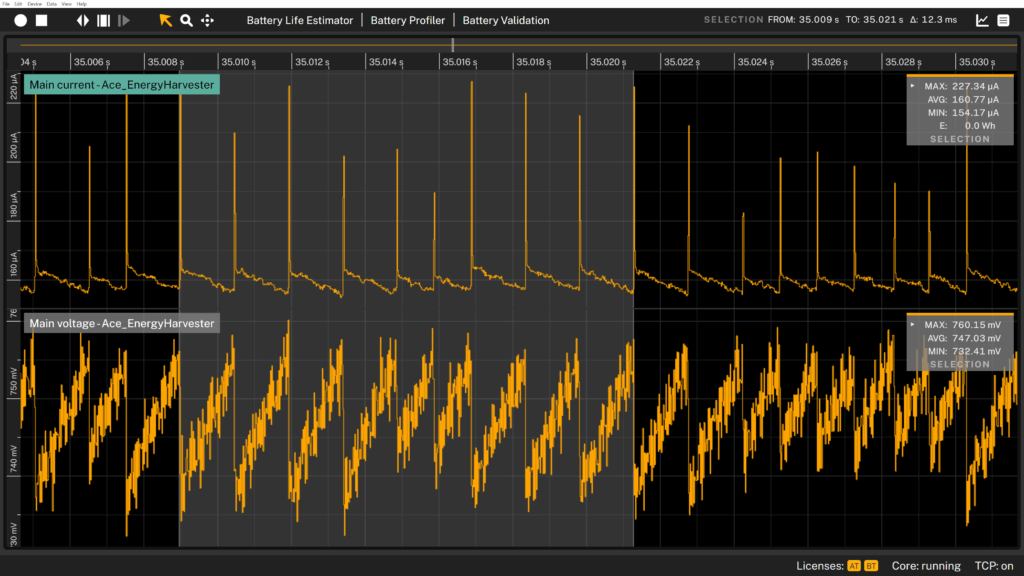
Each operating cycle begins with the PMIC briefly disconnecting the load from the PV cell. During this pause, the PMIC measures the Open Circuit Voltage (Voc) of the PV cell. The system then uses this value to calculate the Maximum Power Point (MPP), the most efficient operating voltage for harvesting energy.
In many energy harvesting systems, the ratio between the open-circuit voltage (Voc) and the MPP voltage is relatively stable across different illumination conditions. You can configure this ratio on the e-peas PMIC between 35% and 85%, with a default of 75%. In the highlighted measurement period, the PMIC captures the Voc and then adjusts the operating voltage to maintain 75% of this measured value, ensuring optimal energy harvesting performance.
PV cell behavior under illumination
We evaluated the behavior of the PV cell by increasing the illumination level. As illumination increased, the measured open-circuit voltage (OCV) also rose. Between OCV measurement cycles, the PMIC continuously worked to maintain the system at its optimal operating point, dynamically adapting the load to maximize energy capture. This behavior is visible in the data through higher energy harvesting levels, as shown in Figure 7.
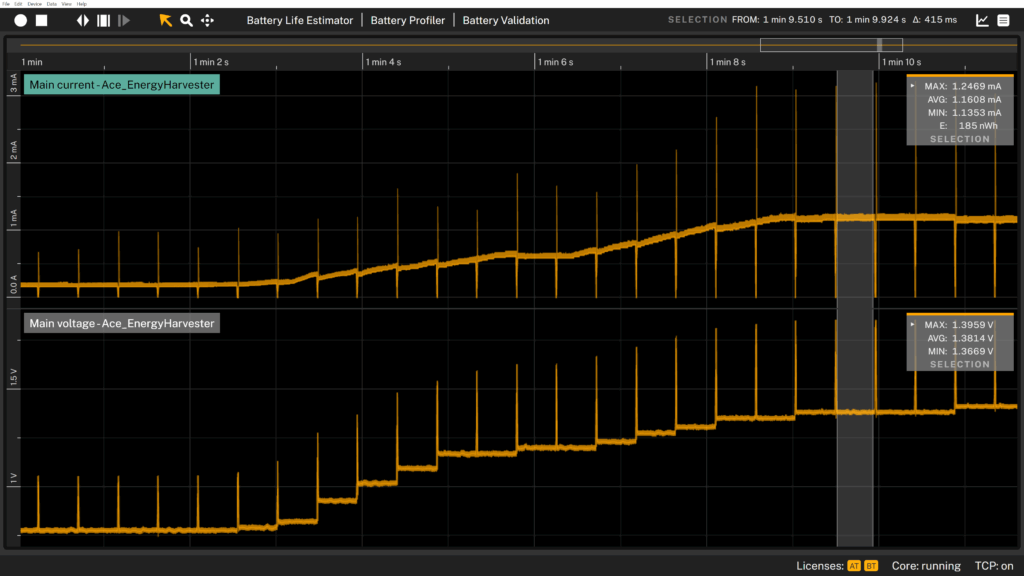
Summary
In this first part of the series, we focused on evaluating the photovoltaic (PV) cell for embedded and IoT solar projects. We demonstrated a setup that measures not only the energy flow from the harvester into the device. We also studied the behavior of the Power Management IC (PMIC), which is essential for regulating and optimizing energy harvesting.
The setup is both accessible and accurate, and scalable. For each new component to evaluate, add another Otii instrument to create a robust and flexible testing setup.
As we continue to break down the steps needed to determine whether your system remains energy net-positive under varying conditions, the following article will focus on energy storage.
Curious about energy harvesting? Our partner Mouser has bundled all the key components into a convenient one-click shopping experience here.
Join us at The Things Conference 2025 on 23-24 September at the booth B21 to explore this further with our partner Silicon Labs.
Sign up for more tech insights
A monthly dose of articles, tips & tricks, and know-how – everything you need to extend battery life in IoT and embedded devices.